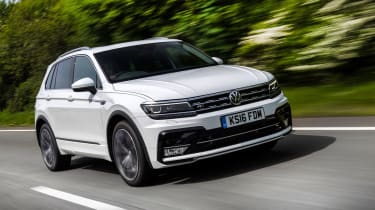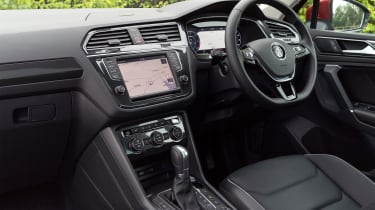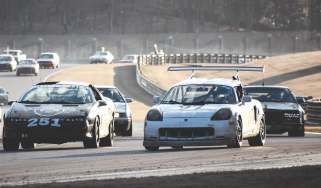New Volkswagen Tiguan R-Line review – a rewarding SUV - Engine and gearbox
VW’s best-selling SUV is competent and refined, but it lacks its own clear personality
The mainstay of the Tiguan’s engine line-up is the four-cylinder turbocharged 2-litre diesel. It can be had with a range of outputs: 113bhp, 148bhp, 187bhp and 237bhp. The 148bhp version gives you the most amount of drivetrain options, that version being coupled with either front- or four-wheel drive, and either a manual or DSG dual-clutch auto. The two more powerful diesel alternatives are four-wheel drive and DSG only, while the 113bhp engine is two-wheel drive and manual only.
As well as the 2-litre diesel, there’s the choice of two petrol engines, both four-cylinder turbocharged units; a 1.4-litre with either 123bhp or 147bhp, and a 2-litre 178bhp unit. Like the range of diesels, the power dictates what sort of drivetrain each is available with – the 123bhp 1.4 comes with front-wheel drive and a manual transmission, while the 147bhp petrol is available with whatever drivetrain you fancy. The 2-litre is only combined with the four-wheel drive and DSG.
Despite diesel being a dirty word currently, especially when discussing VWs, an oil-burner engine is still the most popular, and for some, most fitting in an SUV. This might explain why VW’s 2-litre petrol engine motor feels so much like a diesel when powering the Tiguan. It might have a 6000rpm red line, but it can’t be encouraged to spin any faster than 5500rpm as the gearbox automatically shifts up at that point. It also has the same torque-rich mid-range that you’d find in a diesel engine, encouraging you to change up and keep the revs around 3000rpm to relish in a wave of grunt. That is the only really satisfying thing about it, though, as the noise it makes is disappointingly similar to a four-cylinder diesel.




